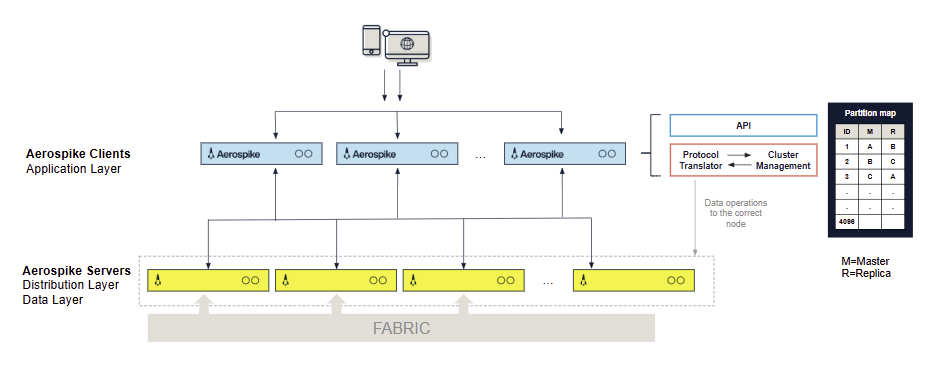Client architecture
This page describes Aerospike’s distributed client-server architecture and the capabilities of the Aerospike client API.
Client library capabilities
The following Aerospike client API capabilities provide high performance and make building with Aerospike simple:
- Tracks cluster states
- At any instant, the client uses the
infoprotocol to communicate with the cluster and maintain a list of cluster nodes. - The Aerospike partitions algorithm determines which node stores a particular data partition.
- Automatically tracks cluster size changes—entirely transparent to the application—to ensure that transactions do not fail during transitions, and applications do not need to restart on node arrival and departure.
- At any instant, the client uses the
- Implements connection pooling so you don’t have to code, configure, or manage a pool of connections for the cluster.
- Manages transactions, monitors timeouts, and retransmits requests.
- Thread safe—only one instance is required in a process.

Figure 1: Aerospike client layer
Besides basic put(), get(), and delete() operations, Aerospike supports the following:
- CAS (safe read-modify-write) operations
- In-database counters
- Batch
get()operations - Scan operations
- List and Map element operations such as
removeByKey()orgetByValueRange() - Queries—bin values are indexed and the database searched by equality or range
- User-Defined Functions (UDFs) extend database processing by executing application code in Aerospike
- Aggregation—Use UDFs on a collection of records to return aggregate values
Client feature support
The Client matrix provides the following client details:
- Full client/server feature compatibility
- Language-specific compatibility notes
- Minimum usable client versions
- Major server changes
- Client/Server Features